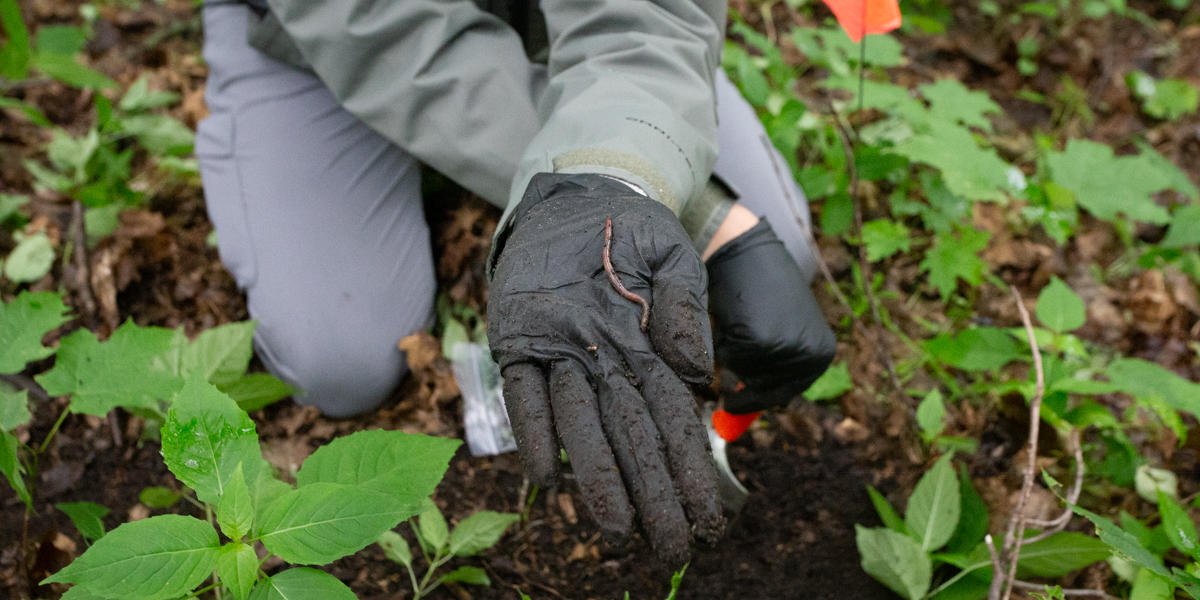
Jumping worm. Credit: Domini Brown
Background
Exotic and invasive European earthworms have infested nearly all of Minnesota's forests and are common even in the remote Boundary Waters Wilderness. Forest soils and understory vegetation have been transformed, and invasive earthworm impacts are cascading through ecological and socio-economic processes.
Minnesota is under a wave of earthworm invasion by jumping worms (Amynthas spp.). Jumping worms are native to East Asia. Previous research has shown that cold temperatures in Minnesota will not limit jumping worms and that Minnesota forests will become divided into two distinct areas, each dominated by a different invasive earthworm group: jumping worms vs. European earthworms. Researchers also found that jumping worm-infested soils are extremely light and loose, likely making them highly susceptible to soil erosion by human footsteps, rainfall, and water runoff. Future sustainability of forested hills in Minnesota is a serious concern.
Minnesota's forested hillslopes are essential for timber production and provide habitats for many of the state's native plants and animals. Although slopes are naturally vulnerable to soil erosion, it has not been of concern because the soils are well-covered with litter layers and held firmly by understory plants and roots. However, jumping worms are transforming this status quo by removing the litter layer and by creating extremely loose soils that cannot be held by plant roots.
Research questions
- What is the magnitude and rate at which jumping worms accelerate soil erosion in the forested hillslopes in Minnesota?
- What are the mechanisms of soil erosion by jumping worms in hardwood forests?
- What is the spatial extent of jumping worms in forested hillslopes?
- What species of native plants are capable of holding soils against jumping worms and could act as erosion-prevention?
- What management practices could help to reduce soil erosion induced by jumping worms in forested hillslopes?
Practical implications
Researchers aim to assess state-wide risk of jumping-worm induced soil erosion. They will also develop recommendations for effective erosion control measures against jumping worms, including the most critical times for intervention.
Outcomes
This project began in January 2024 and is in progress for the next several years. Please check back at a later time for updates.
To stay connected, sign up for the MITPPC newsletter and follow us on Facebook and LinkedIn.